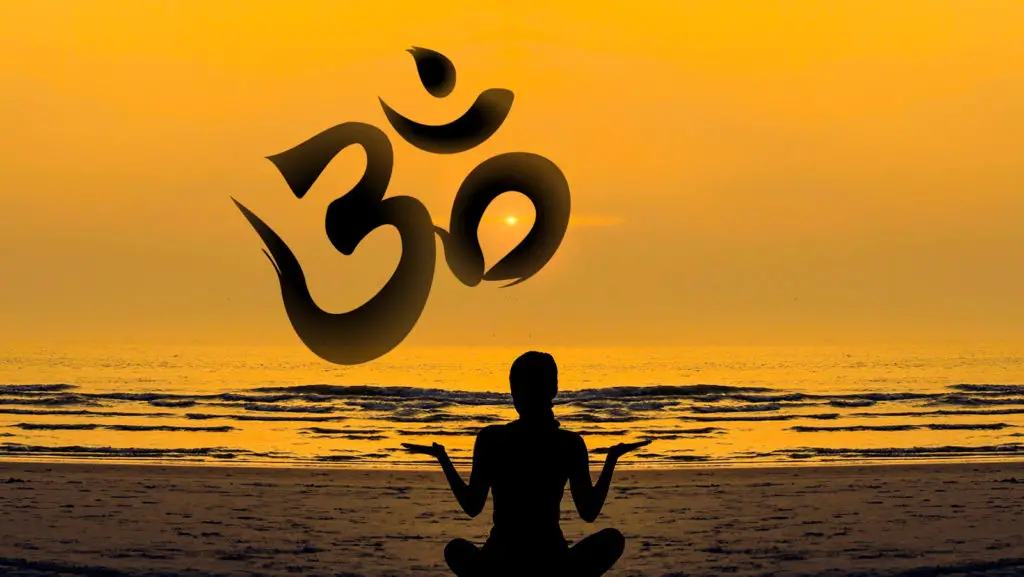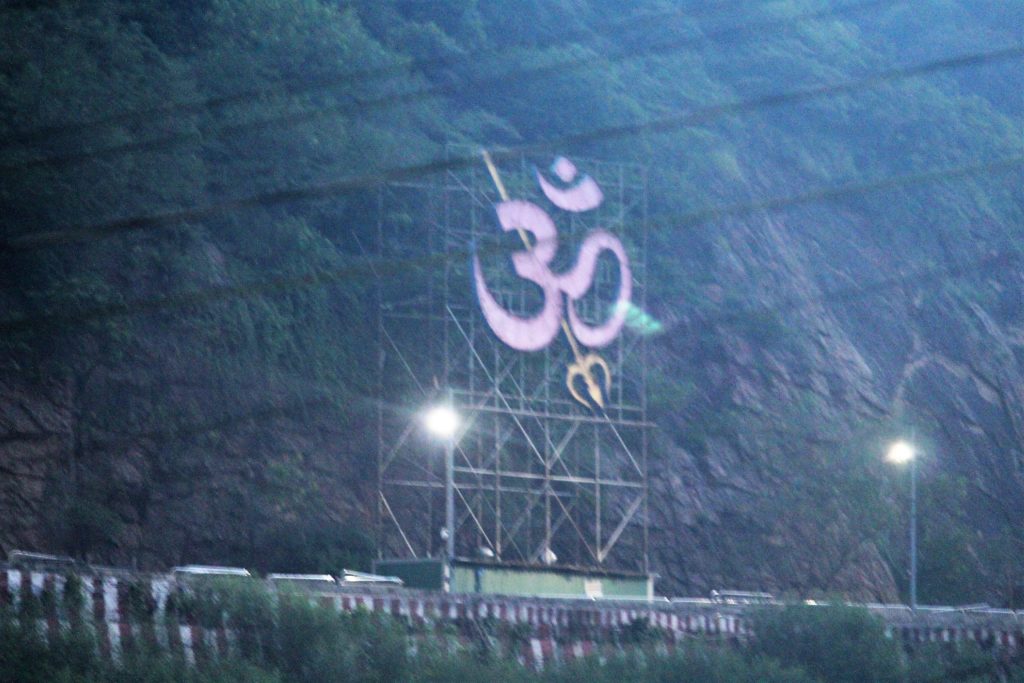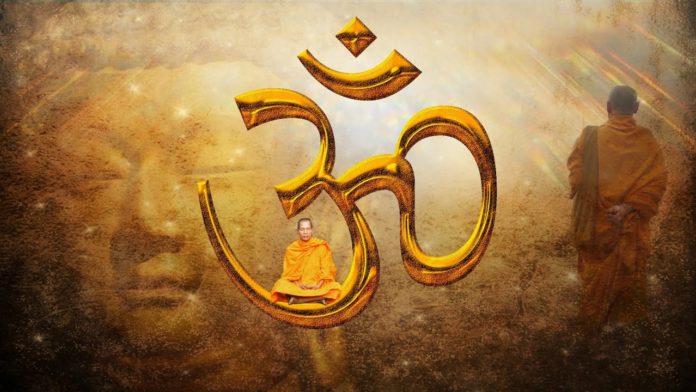Om in Hinduism is the most sacred syllable or symbol. It is a mantra for people and is chanted frequently, either independently or before any other mantra. It is primordial sound and Hindus address it as Shabda-Brahman.
Also spelled as Aum, the word is usually related to Lord Shiva, who is known as the destroyer God. So chanting Om is like calling God’s name.
The word Om is found in ancient and medieval era manuscripts, monasteries and temples. It is found in the beginning as well as end of chapters in Upanishads, Vedas and other texts of Hindus.
Having three phonemes ‘a-u-m’, the syllable is believed to have been first mentioned in the Upanishads and variously associated with concepts of cosmic sound. It is affirmation to something divine.
The mystical syllable is primarily referred to as pranava. The other terms used for Om include aksara, ekaksara, omkara, and Udgitha.
Aksara literally means imperishable or immutable. ekaksara refers to single letter of the alphabet while omkara means female divine energy. The word Udgitha is found in Sama Veda and bhasya.
In the Aitareya Brahmana of Rig Veda suggests the three phonetic components of Om correspond to the three stage of cosmic creation. It is believed when the word is chanted or written, the creative powers of the universe is celebrated.
Sanskrit
Read :- Crowdfunding becoming surviving tool for Sanskrit school in Melukote

In Sanskrit there are a total of nineteen meanings of Om and those are as below:
rakṣaṇa (protection) – It is said those who chants Om are protected.
gati (motion) – Om also means unstoppable, eternally moving.
kanti (charm or beauty) – It means divine charmer, beauty. It also means possessor of divine charm. It attracts the mind of all those people who meditate on it.
priti (bliss or favorable disposition) – It means possessor of bliss and such individual who is disposed towards everybody.
trpti (satisfaction) – It even mean contented or satisfied.
avagama (knowledge) – It means the knowledgeable, the omniscience.
pravesa (entrance) – It means one that enters everywhere and every form in the Universe.
sravana (bearing) – It means listener of expressed words as well as unexpressed emotions.
yacana (entreaty) – It means urging everyone to be on a righteous path, to be entreater.
kriya (action) – It means doer or performer of all actions like Anugraha (Liberation), Tirobhava (putting in Illusion), samhara (rejuvenation), sthiti (Preservation) and Sristi (Creation).
iccha (desire) – It means well-wisher, desiring well being of everybody as mentioned in the Sanskrit phrase – Serve Bhavantu Sukhinah/
dipti (radiance) – It means radiant, brilliant, the divine aura.
avapti (attainment) – It means supreme attainer, which means nothing is out of reach.
āliṅgana (embrace) – It means all-embracing.
himsa (violence) – It means destroyer of our karmas.
adana – It means receiver of all the material offerings and spiritual efforts.
bhaga – It means divide itself and reside within soul.
viddhi – It means ever-growing, expanding like cosmic universe.
Ancient Texts
In Vedic texts the word is equated with Bhur-bhuvah-Svah, which symbolizes “the whole Veda.” Several shades of it is found too like Om is the “universe beyond the sun” or Om is the “infinite language, the infinite knowledge.” Om means “mysterious and inexhaustible” or “essence of breath, life, everything that exists.”
Gayatri matra from Rigveda Samhita is prefixed by the word and also followed by bhur bhuvah svah. Similar mantras helped Om to become a standard utterance and continued to be used in Hinduism. Many ceremonial functions and major incantatios too begins and ends with the word.

Swami Maheshwarananda (Swamiji) said in 2002 that the word reflects cosmological beliefs in Hinduism as it is the sound associated with creation of universe from nothing.
One of the oldest Upanishads, the Chandogya Upanishad, opens up with a recommendation that let a man meditate on the syllable and called it as Udgitha, which is song of Om. In section 1.2 of the book it is said Gods took Udgitha unto themselves with believe to overcome demons.
Maitri Upanishad has elaborated Om differently. The three roots of syllable A-U-M are stated as below:
Gender-endowed body – feminine, masculine, neuter
Light-endowed body – Agni, Vayu, Aditya
Deity-endowed body – Brahma, Rudra, Vishnu
Knowledge-endowed body – Rig, Saman, Yajur
Mouth-endowed body – Garhapatya, Dakshinagni, Ahavaniya
Word-endowed body – Bhur, Bhuva, Svah
Heat-endowed body – Breath, Fire, Sun
Time-endowed body – Past, Present, Future
Growth-endowed body – Food, Water, Moon
Thought-endowed body – intellect, mind, psyche
Jainism
The Om symbol is used in ancient Jain scriptures and it represents five lines of Navakar mantra, daily prayer of the religion to honor the panch parmeshtis. The initials of Om in Jainism are AAAUM, which is initials of five parameshthis – Arihant, Asharira, Acharya, Upajihaya, Muni.
Buddhism
In the Tibetan Buddhism the syllable is used in the beginning of dharanis and mantras like “Om mani padme hum.” The 14th Dalai Lama described Om as composed of three pure letters that symbolizes impure body, speech and mind of everyday.
Sikhism
In Sikhism the Om is termed as Ik Oankar, which means there is one God. Some Sikhs says Ik Oankar is same as Om. It is a compound of numeral one. It is also pronounced as Omkara.
Southeast Asian Countries
Om symbol is found in several Southeast Asian countries. In Thailand it is called as Unalom. During the Thong Chom Klao of King Rama IV (r. 1851–1868) rule it was official emblems.
The Om symbol has also been found in official seal of Cambodia. In traditional Chinese characters it is written as pinyin – ǎn. In simplified Chinese characters it is simply written as pinyin -weng.
Devanagari
The word Om is primarily written in Devanagari language, which means tha language that has come from abode of divinity or deities. Dev means God and nagri means abode or city. It is based on ancient Brahmi script and is a left-to-right abugida. It consists of 33 consonants and 14 vowels. It was developed between 1st and 4th century CE and was used by the 7th century CE.



